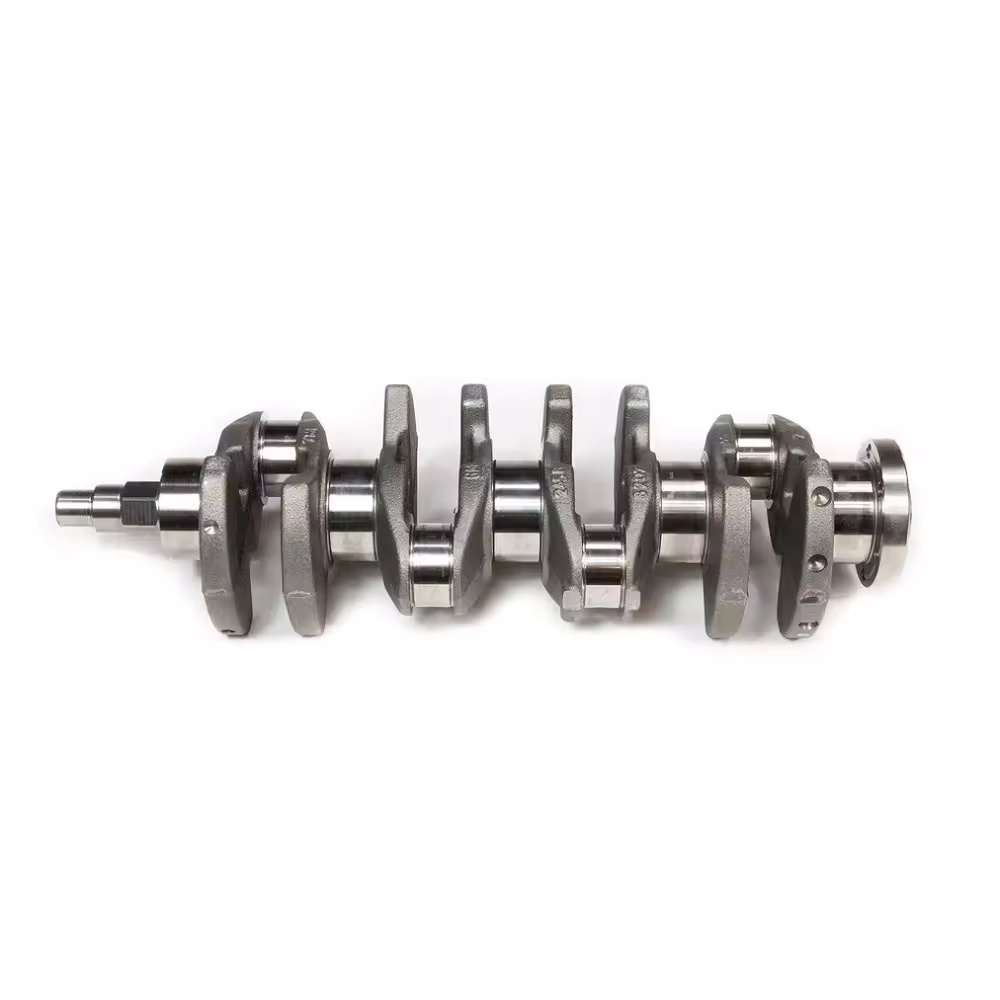Replacing a crankshaft in a GM Chevrolet car is a complex and involved process that requires careful attention to detail and adherence to manufacturer specifications. Here's a general outline of the steps involved:
Preparation:
Park the car on a flat surface and engage the parking brake. Disconnect the battery to prevent accidental electrical shorts.
Access:
Gain access to the crankshaft by removing any necessary components, such as the engine cover, belts, pulleys, and timing cover. Drain the engine oil and coolant to prevent spills.
Support:
Support the engine using an engine hoist or jack to prevent it from sagging or falling during the repair process. Secure the transmission to prevent movement.
Remove Components:
Remove the components obstructing the crankshaft, including the harmonic balancer, timing chain or belt, and any other accessories attached to the crankshaft.
Disconnect Crankshaft:
Disconnect the connecting rods from the crankshaft by removing the rod caps and bearings. Carefully remove the main bearing caps and bearings.
Extract Crankshaft:
Use an appropriate tool, such as a crankshaft pulley puller or an engine crane, to extract the crankshaft from the engine block. Be cautious to avoid damaging any surrounding components.
Inspect Components:
Inspect the engine block, main bearings, connecting rods, and other related components for any signs of damage or wear. Replace any damaged or worn parts as necessary.
Install New Crankshaft:
Carefully install the new crankshaft into the engine block, ensuring proper alignment with the main bearings and connecting rods. Apply a suitable lubricant to the bearing surfaces.
Reassemble Components:
Reassemble the engine components in the reverse order of removal, including the timing chain or belt, harmonic balancer, belts, pulleys, and engine cover.
Fill Fluids:
Refill the engine with fresh oil and coolant according to manufacturer specifications. Double-check all connections and fittings for tightness.
Testing:
Start the engine and allow it to idle for a few minutes, checking for any abnormal noises or vibrations. Take the car for a test drive to ensure proper operation.
Final Inspection:
Once the repair is complete, perform a final inspection of the engine bay to ensure everything is in order. Dispose of any old fluids and components properly.
It's important to consult the vehicle's service manual or seek professional assistance if you're unfamiliar with the process or lack the necessary tools and experience. Working on the engine of a GM Chevrolet car requires precision and expertise to ensure a successful repair.
F: What is a crankshaft?
Q: Crankshaft is a part of the engine that helps you convert the linear motion of the Piston into rotary motion that can be delivered to the gearbox/wheels.
Without the crankshaft you can't transfer the reciprocating motion of pistons to the drive shaft.
It also holds The flywheel which is like an energy reservoir that helps maintain the constant reciprocating motion of the Piston without any mis-alignment and mis-firing.
It's also the connecting link between the engine and the gearbox/drive shaft. Power is delivered from the crankshaft to the wheels/gearbox thus we calculate BHP that is produced at the crankshaft for more precision.
F: What is the difference between a camshaft and a crankshaft?
Q: Crankshaft: It is the shaft which gives us output from the engine. It is made to rotate by the connecting rod of the piston.
It is the shaft which is made to rotate and take output power from the Combustion process in the chamber. The connecting rod is connected to this crankshaft and makes it revolve about its own axis and thereby utilize the power further for use.
The crankshaft has a main journal and the counterweight. Th Main Journal is over which the connecting rod is mounted whereas the counterweights are used to utilize the inertia of the weights in further rotation of the crank during the exhaust stroke happening in the combustion chamber of IC Enigne.
Camshaft:
It is the shaft which is driven in synchronization with the crankshaft, having cam lobes mounted on it, to make the valves open and close on the corresponding times.
In an Internal Combustion Engine, the intake and exhaust valves open and close due to simple lift and drop mechanism of the cam-lobes. These cam lobes are those which have a cam profile. As shown in the image below(The cam-lobe)
These cam lobes are mounted on the camshaft which rotates about its own axis in synchronization of the crankshaft or the shaft which is the one generating the power from combustion) .Due to this type of profile, the valves open and close as the lobe’s nose pushes the pushrod and makes the valves open or close as a result of the pushing mechanism (they come back because of spring retracting mechanism of the valve springs).
MESSAGE
Please contact us now, your inquiry will be answered soon!






